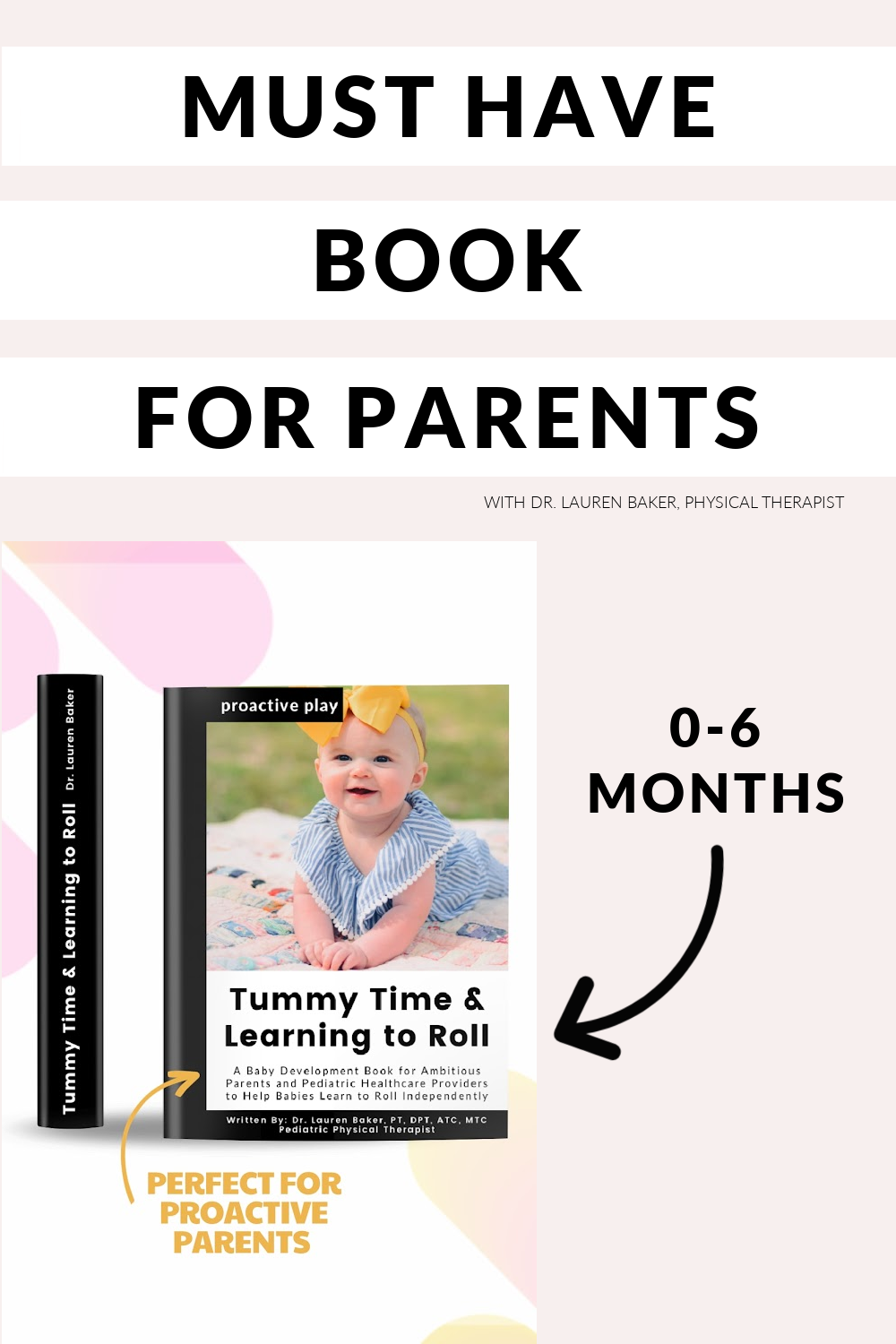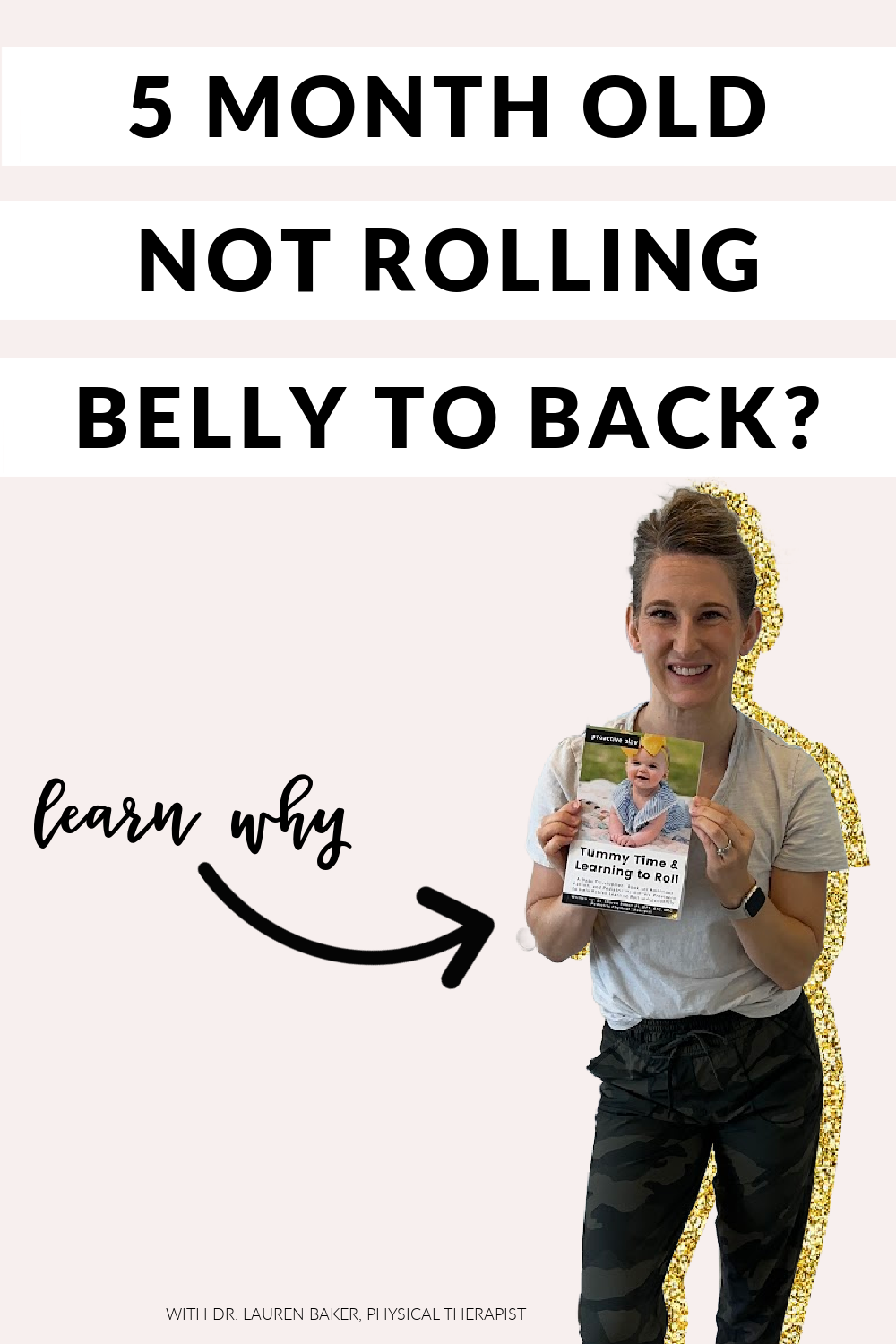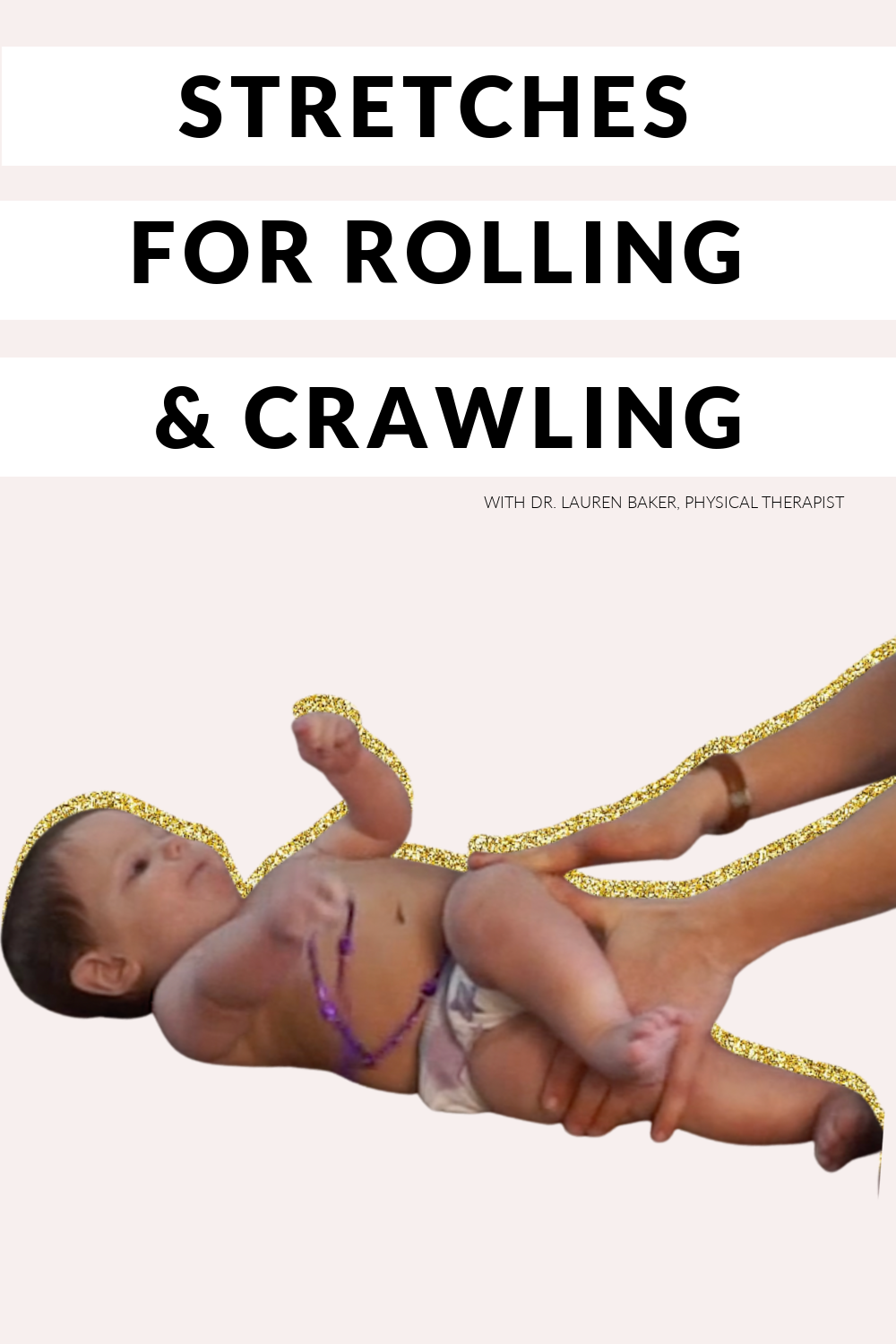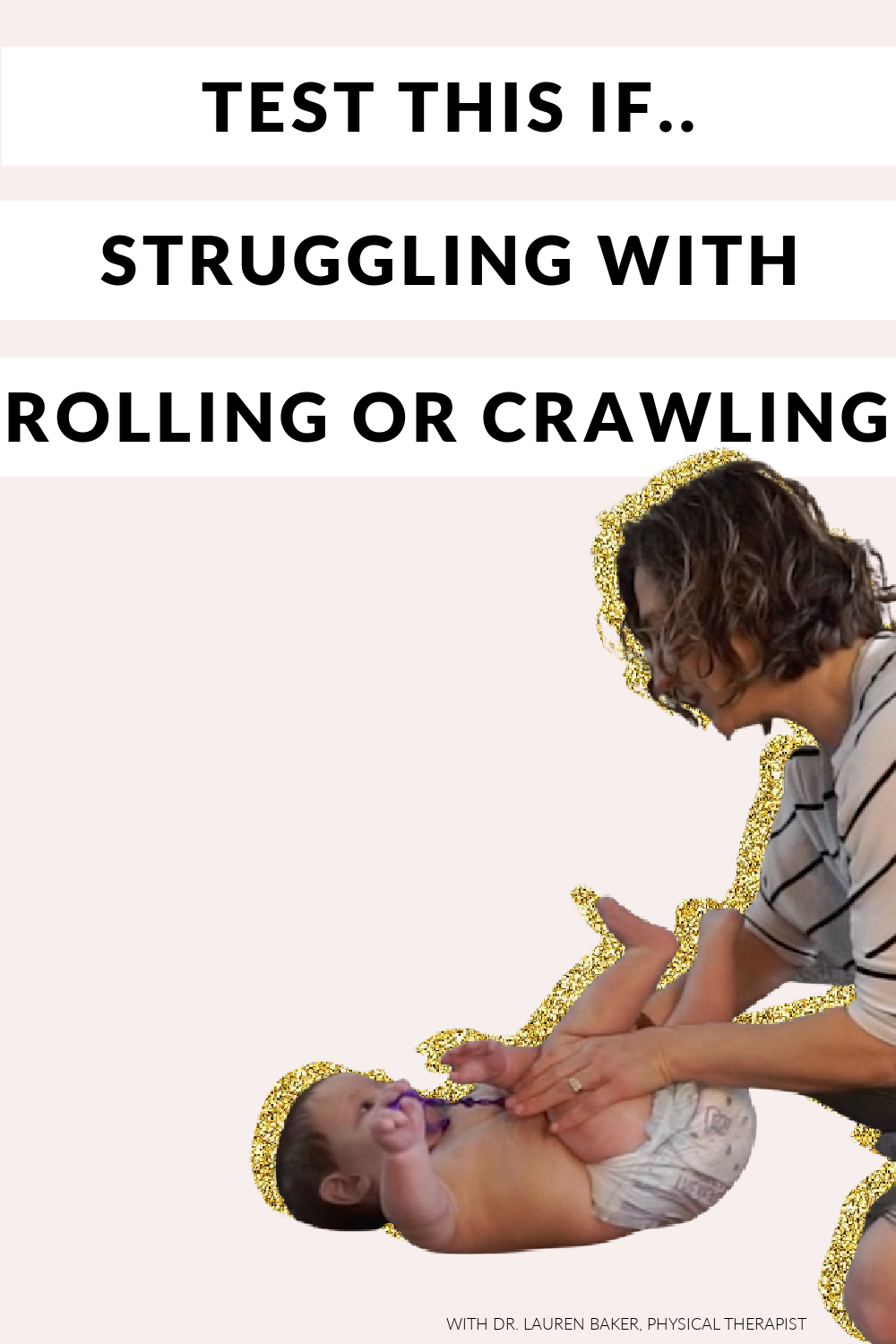Total Motion Release Technique: How To Teach Baby To Roll Over Back To Belly
this blog post contains affiliate links
Hello everyone! I'm Dr. Lauren Baker, your pediatric physical therapy bestie, and I'm thrilled to share with you some insights from my world of helping babies move better.
In my recent YouTube video, I dove into a Total Motion Release Technique designed for little ones and in this blog post, I hope to empower you, and all proactive parents, with the knowledge and skills to assist your babies in achieving fluid, confident movements as they begin to master rolling back to belly AND belly to back.
The Importance of Rolling: A Developmental Milestone
Rolling over is more than just a cute trick; it's a crucial developmental milestone for babies. It involves complex coordination and strength, marking a significant step in your child's growth journey.
However, some babies develop a preference for rolling in one direction, often due to tightness in their lower or upper trunk. This is where Total Motion Release (TMR) techniques can help, because sometimes the mobility limitation is the only thing holding a baby back from rolling in all four directions.
TMR: A Different Approach to Mobility
TMR is fascinating because it approaches mobility differently than traditional stretching. Instead of elongating tissues, TMR focuses on shortening them to promote relaxation and improve range of motion.
It is amazing for babies, because often babies don’t understand that their body is safe when they feel that resistance that can occur with traditional stretching.
Often, they will counter-intuitively tighten up when they feel that resistance of a tight muscle and thus limit the mobility that we are able to achieve. One of the more strange things that confuses parents with TMR, is that we interestingly, only work on the 'tight' or 'easy' side, which might seem counterintuitive, but it yields remarkable results.
My Experience with a Special Little Client
In my video, I demonstrated TMR with a baby experiencing right-sided lower trunk tightness, hindering her ability to roll over her right arm from back to belly. Using TMR, we focused on the right side, holding it for a few minutes, followed by vestibular exercises like gentle bouncing (while she was being held).
This combination not only addresses the tightness but also helps the baby's body integrate and understand the new range of motion. Once we finished both of those, we worked on rolling over, which you will be able to notice in the video that is much better directly afterward.
One of the core principles of TMR, is that you not only want to increase range of motion (that both sides of their bodies can go the same distance) but also that you make it functional by working on a skill directly afterward, like in this case: rolling.
In the video, I also demonstrate what it would look like to work on the other side if a baby was experiencing tightness on the left side.
Engaging the Baby: The Art of Distraction
Working with babies means expecting the unexpected! Not all babies are calm during therapy sessions, and that's perfectly normal. The key is to keep them engaged and happy. This might mean playing with their toes, singing songs, or introducing different toys.
The goal is to maintain their comfort while working on the techniques. In the video, you can watch as I use a few of my favorite techniques to keep this little one engaged and calm.
Assessing and Addressing Tightness
Identifying which side to work on is crucial. I often find that if a baby struggles to side bend on one side (think the “I’m a little teapot” motion), the opposite side might be tighter.
In the video, I demonstrated how to assess this on both sides, so that you have everything you need to screen your own baby. The TMR technique I used involved gentle side bending, moving their pelvis toward their elbow, ensuring not to push beyond the baby's natural resistance [make sure to watch the video or check out my book linked below to see exactly what to do!].
The Rewarding Outcome
The transformation post-TMR is always fun to watch. The baby I worked with showed a significant improvement in her ability to roll smoothly from back to belly and vice versa. She became more motivated and engaged in her movements, which is exactly what we aim for.
If I could educate parents on ANY milestone and encourage them to take just ONE seriously that could have the biggest impact on their child’s overall progress toward movement it would be rolling.
Often if a baby does not roll in all four directions, they are at a risk for struggling with crawling, but if they use all four directions of rolling they are at a much lower risk of struggling with future milestones.
TIMESTAMPS:
0:00 introduction
1:09 why babies need to roll in both directions belly to back and back to belly
2:38 how total motion release (TMR Release) is different than traditional stretching to increase mobility for babies to learn how to roll over back to belly
4:37 TMR Release Lower Trunk Sidebend to increase baby's ability to roll over back to belly
6:20 assessing which side to complete in lower trunk sidebend TMR release
8:07 example of TMR Release Lower Trunk Sidebend in Supine to help parents learn how to teach baby to roll over back to belly
12:53 improvement in teaching baby to roll over back to belly
15:17 how to work 1:1 with Dr. Lauren Baker, PT
TOY IDEAS:
Black and White Book - https://amzn.to/3iN5oZX
Black and White Rattles - https://amzn.to/3wnhKuE
Sensory Stick Teether - https://amzn.to/3D26pEn
Teething Rings - https://amzn.to/3HkLOxu
Teething Rings - https://amzn.to/3XJikyz
Teething Ring With Shapes - https://amzn.to/3iTTVru
Teething Ring With Shapes (Girl) - https://amzn.to/3QRVEKv
24 Pack Teething Rings - https://amzn.to/3ku1eqb
Freezer Safe Teething Rings (Fruit) - https://amzn.to/3WsdYuS
Pacifier - https://amzn.to/3WvWmOt
Curious About Learning More on Tummy Time, Rolling, or Both?
The absolute best book for parents on tummy time and rolling is: Tummy Time and Learning to Roll: A Baby Development Book for Ambitious Parents and Pediatric Healthcare Providers to Help Babies Learn to Roll Independently. The book comes with a free online video course to help parents fully understand how to complete the different exercises, printable checklists to know exactly where your baby is at, and when to reach out for additional help.
This book was written by Dr. Lauren Baker, PT, DPT, ATC, MTC, who is a Pediatric Physical Therapist in Boise, Idaho, trained in helping parents learn how to help their babies move and master their milestones. She loves teaching parents how to see how their babies are moving as well as how to influence those movements though play positions and exercises to help babies move with confidence and ease.
Tummy Time and Learning to Roll is the first book in the Proactive Play series written by Pediatric Physical Therapist Dr. Lauren Baker in order to help Ambitious Parents and Pediatric Healthcare Providers learn how to help babies master tummy time and learn to roll. It is meant to help ambitious parents understand baby development from birth to six months (tummy time to rolling).
This book is a mix of easy-to-follow and more in-depth information than is typically found in baby development books because Dr. Baker believes parents deserve to have all the information at their fingertips.
This book breaks down each piece of movement in checklists so that parents know what their babies need for tummy time and rolling. It also covers what areas might limit a child with rolling, why it is so important, and when to seek help from a pediatric PT.
This book comes with colored photos and easy-to-follow demonstration videos that can help parents implement safe, strategic play-based exercises with their babies in 20 minutes per day.
A Great Resource For:
Parents and Pediatric Healthcare Providers of babies 0-6 months
Parents of babies who are struggling with tummy time, rolling back to belly, belly to back, or only to one side
Access to simple, easy-to-follow videos of play positions and exercises
Learning the four pillars of movement needed in order to master rolling
240+ Color Photo Examples of:
Tummy Time, Sidelying, and Back Play
Developmental Toys and Equipment
Hand Placement and Strategic Play Positions
Common Areas of Restriction or Weakness
When To Reach Out For Help
What If You Want Extra Help?
If you have concerns about your baby’s movement, remember, you can always reach out to a pediatric physical therapist. It's your right as a parent to advocate for your child's development.
Sometimes, a few tips and tricks are all you need to get your baby moving better. We're here to support you and release those mama worries. If you are looking for in home pediatric physical therapy, check our listing of therapists.
I am on a mission to educate parents on proactive ways to aid their babies' movement development. If you've found this topic intriguing and wish to learn more about Total Motion Release or other strategies to assist your baby's rolling and other milestones, I encourage you to reach out for a consultation. Together, we can ensure that your little one embarks on their movement journey with confidence and ease.
For those eager to learn more or seeking personalized guidance, I offer online video parent consultations internationally and Pediatric Physical Therapy in Boise, ID and the Treasure Valley – both of which you can book by going to the appointment tab or by clicking here. I am dedicated to answering questions and providing tailored play activities for each unique developmental journey.
Final Thoughts
As a pediatric physical therapist, I find immense joy in helping little ones discover their full movement potential. Remember, every baby is unique, and their journey to milestones like rolling, sitting independently, and crawling will be just as individual.
Your involvement and understanding of techniques like TMR can make a significant difference in their development. Proactive Parents truly can influence how their children move when given the right amount of information and being shown how all the movements they are focusing on helping their littles achieve fit together.
I hope this post has given you a better understanding of how Total Motion Release can benefit your baby. I'm here to be your guide and support in this wonderful, albeit sometimes challenging, journey of parenthood. Let's help our little ones move with confidence and joy!


















